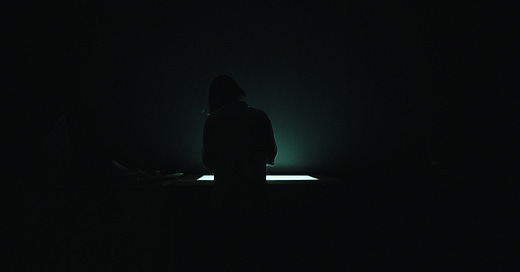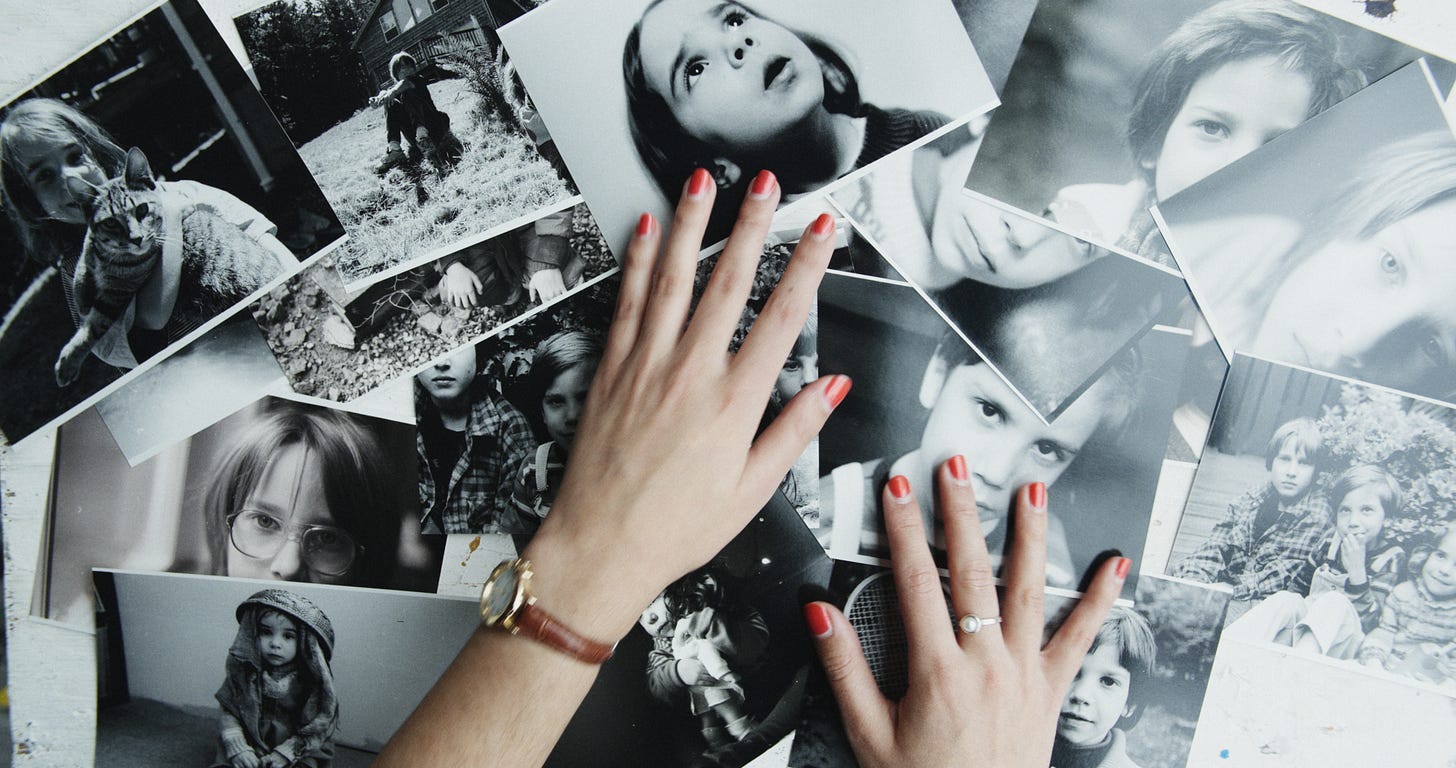Sophy Romvari has carved out a fascinating and flourishing oeuvre of short films in just six years. Her approach to filmmaking is deeply personal, often drawing on her own familial and cultural background (her immediate family immigrated to Canada from Hungary in the 1980s). At the same time, her essence as a filmmaker remains hard to pin down: each film she has made departs from its predecessor in unpredictable and inventive ways. These films are stylistically distinct, traverse subjects both universal (family, grief, disconnection) and particular (the ethics of Barbra Streisand cloning her dogs), and move dextrously in and out of fiction, non-fiction, and in-between, establishing hers as a truly distinctive voice in the contemporary landscape of North American cinema.
I’ve had the privilege of being friends with Sophy since 2015, and of working on her first two films: Nine Behind (2016), as camera operator, and It’s Him (2017), as producer. It gives me great joy, then, to share that both of those films and six others produced between 2015 and 2021 are now available to view on none other than the Criterion Channel. And while I’m obviously biased to some degree, I would like to share a couple of words about what her films mean to me.
A quick synoptic view of Sophy’s work reveals the diversity of subjects and situations which have captured her gaze. Her first professional short Nine Behind (2016) is a fictional portrait of family distance both geographical and emotional: A young woman in Vancouver calls her estranged grandfather in Hungary and attempts to reconnect, reopening old wounds in the process. It’s Him (2017), another fictional work, focuses on a teenage girl who believes she has seen her missing brother in the background of a documentary. Pumpkin Movie (2017) marks a shift into the ‘not-quite’ space of the hybrid documentary, with Sophy and her friend Leah playing fictionalized versions of themselves recounting uncomfortable encounters with men.
From this point forward, the films move decisively into documentary: Grandma’s House (2018), Norman Norman (2018), In Dog Years (2019), and Remembrance of József Romvári (2020) all deal with conventionally non-fictional subjects - family heirlooms and histories, aging dogs, and real people both living and departed. Out of this stretch emerges the astonishingly frank and intimate Still Processing (2020), which for the first time places Sophy and her brother Ben front and center as themselves as they wrestle with the loss of their two older brothers.
What is the essence of Sophy’s presence or voice as a filmmaker? That is a question which has haunted me, particularly since the completion of It’s Him, when it suddenly became possible to compare two of Sophy’s films side by side. Even then, there was a strong sense of a distinctive presence common to the two films, even though they differed considerably in their ends. With the arrival of each new film, I have only become more convinced that there is a rich animating voice binding these films into a family of their own, and that the essence of that voice lies with their principal maker: writer, director, actor, and sometimes editor Sophy Romvari.
There is much that could be said about the motifs, both thematic and formal, which bubble up in these films and bear witness to the presence of a distinctive and personal voice, but I would like to limit my thoughts to how Sophy’s voice has particularly moved me as a filmmaker.
Seeing these films come into being over the years, both up close and from a distance, has deeply encouraged me in my own practice as a filmmaker. I think that Sophy has demonstrated a posture towards filmmaking that shows it is possible to make poetic and deeply-felt cinema on its own terms, embracing the limitations of now, instead of deferring everything to later - when I finally get that grant, or that producer calls me back, or whatever that thing is which I need to move forward. Instead of being hung up on the waiting periods which characterize an ‘emerging’ film career’s opportunities to break into the official system (guarded by industry, government, and festival recognition), Sophy’s philosophy of filmmaking - at least from what I’ve seen - has remained consistently nimble, modest, and productive in equal measure.
This consistency is the great secret, and in some ways, the scandal of her films: some of these ideas are so slight that they should not ‘work.’ And yet, they do work; they do more than work, they overflow with an abundance of potency and possibility. I believe that this success finds its root in a deep conviction that there is nothing too small to film if it discloses, somehow, the germ of a complete idea, moment, or feeling. It is this openness to the accidental, the stray, and the small, which enables a profound freedom from the pressures of establishing a conventional directing career, with its need to impress gatekeepers or to follow certain prescribed industry paths.
To me, the freedom of Sophy’s filmmaking is nothing less than a kind of poietic fidelity: a way of seeing and making which is simply and deeply faithful to the richness of being found in the things - the photographs, memories, desires, confessions, sighs, and silences - which form the heart and soul of these films. There are lots of things but very few signs in Sophy’s films, and yet none of those things are robbed of their signatory potency, a fact which culminates profoundly and overwhelmingly in the film that crowns this collection, Still Processing.
One final thought: Jacques Maritain, in his philosophy of the operations of the artist, noted the twofold development of the artist as following two related ways or roads. First, there is the necessary education in the viae certae et determinatae, the ‘certain ways’ or the ‘fixed rules’ of an art. These are not rules imposed by a certain school or movement, “but the ways of Operation peculiar to art itself, the ways of working reason…”1 In the bald and brutal terms of today, we would simply say today that ‘this is how the art works.’ Once an artist is well-versed in the rudiments of her craft, which involves a certain measure of practical and formal knowledge, she must still find the animating principle - the spiritual vitality or soul - which will inform her work from within. This can only be done by the second way, the via inventionis, the ‘way of discovery,’ “which requires solitude and is not learned from others.”2
This process of discovery is the means by which an artist comes into his or her own utterly personal and particular way of making. When this happens, something extraordinary takes place: the closer the artist gets to finding the spiritual heart of her art, “the more the viae determinatae to be followed will be appropriate and personal to the artist, and as such discoverable by one alone.”3 The 'certain rules’ become obedient, pliable, and personal to the artist - in short, they become the means by which her voice, and hers alone, is realized. She has found her path.
The great pleasure of these films is that they show precisely this journey: the simultaneous embracing of viae determinatae and via inventionis, and the taking flight which happens when one has truly found her way. And while there remains much more to be found, let it be said that something substantial has been found and will be preserved as long as these films exist: the voice of a filmmaker in all of its fullness. An even greater fullness awaits, but what we behold now is worth treasuring, too.
Watch ‘Short Films by Sophy Romvari’ on the Criterion Channel here.
Listen to Film Formally’s special commentary miniseries on the films here.
Jacques Maritain, Art and Scholasticism. trans. Joseph W. Evans, University of Notre Dame Press ed., 1974, p. 38
Ibid. p. 42
Ibid. p. 43 (The translation of this particular sentence, which I prefer to Evans’ version, is from an earlier edition: trans. J.F. Scanlan, 1930, p. 35)









